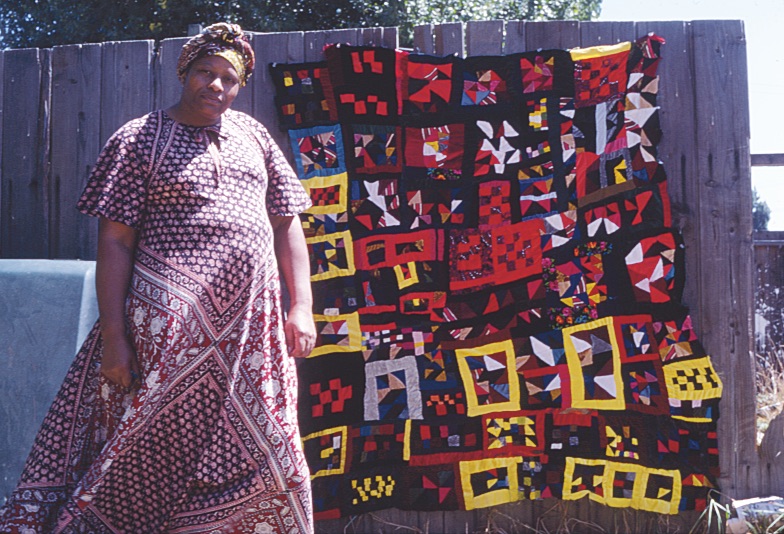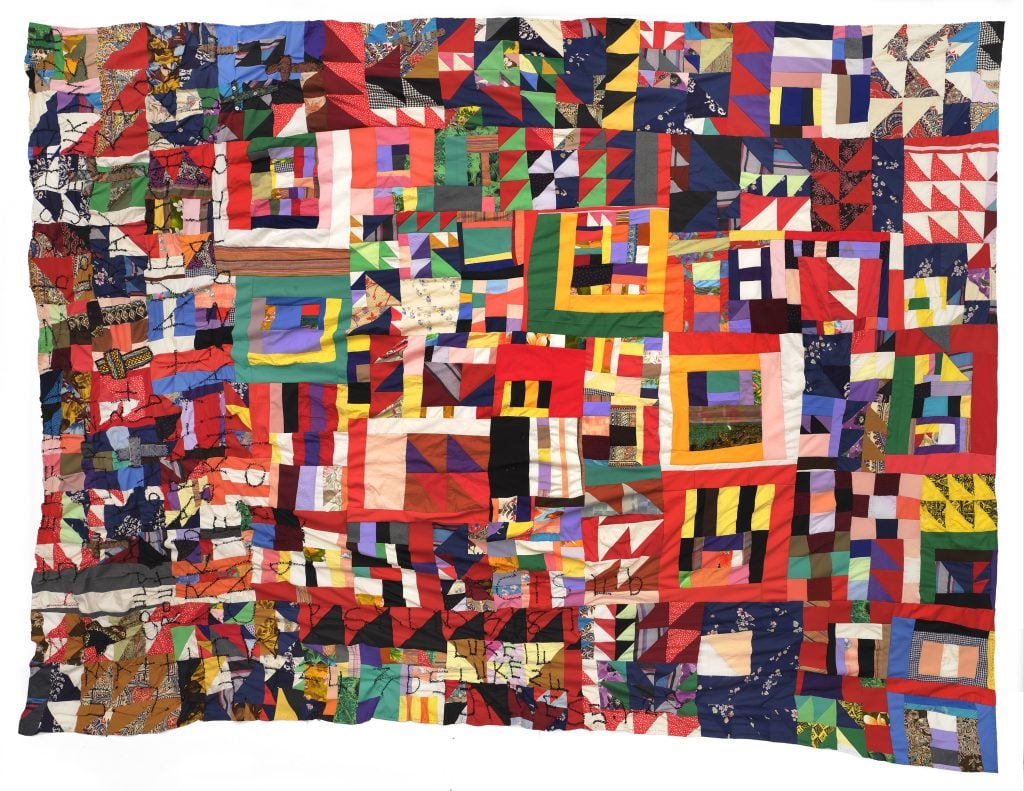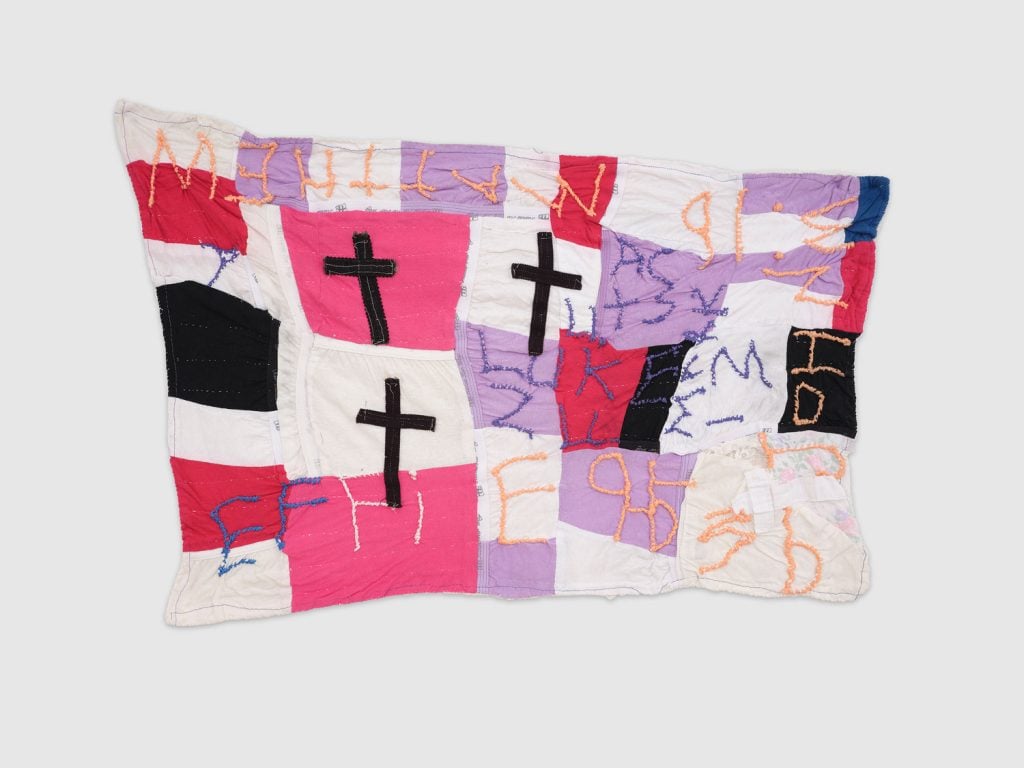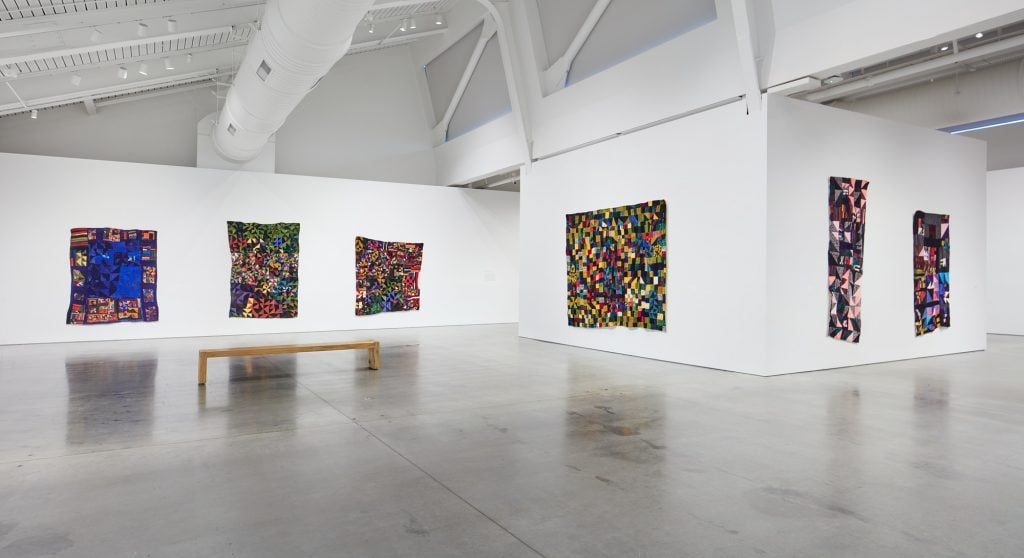On View
The Brilliant Quilt Artist Rosie Lee Tompkins’s Patron Donated Hundreds of Her Works to One Museum. Did His Generosity Hurt Her Legacy?
Shows of Tompkins’s virtuosic artworks are up now at BAMPFA and Anthony Meier Fine Arts.

Shows of Tompkins’s virtuosic artworks are up now at BAMPFA and Anthony Meier Fine Arts.

Taylor Dafoe

Improvisational quilter Rosie Lee Tompkins was virtually unknown by the general public during her lifetime—an anonymity she not only welcomed, but carefully cultivated. Now, with two new Bay Area shows at the Berkeley Art Museum and Pacific Film Archive (BAMPFA) and Anthony Meier Fine Arts, the virtuosic talent likely has more work on view at one time than ever before.
There’s just one catch—and it’s one that makes growing the public’s understanding of Tompkins’s work, not to mention her market, a unique challenge. The artist had a single primary patron who assembled a large collection of her work—and donated it en masse to one museum. How do you grow a legacy, and a collector base, when an oeuvre is so centralized?
Tompkins, whose real name was Effie Mae Howard (the pseudonym was a privacy safeguard), was born in 1936 to a many-membered sharecropping family in southeastern Arkansas. Though she learned to quilt at an early age, it wasn’t until her mid-40s, working as a nurse in the Northern California town of Richmond, that she embraced the craft as more than a hobby.
She would, for the next 25-plus years until her death in 2006, churn out hundreds of quilts, many intricate enough in their control of color and jazzy sense of composition to draw comparisons to the great abstractionists of the modern era.

Rosie Lee Tompkins, Untitled (c. 2002). Courtesy of BAMPFA.
“Tompkins’s work, I came to realize, was one of the century’s major artistic accomplishments, giving quilt-making a radical new articulation and emotional urgency,” New York Times critic Roberta Smith recently wrote of her experience seeing Tompkins’s work for the first time in 1997. “I felt I had been given a new standard against which to measure contemporary art.”
This snippet was one of many glowing passages in Smith’s 4,300-word review of Tompkins’s “triumphal retrospective” currently installed at BAMPFA. (The museum is currently closed due to California’s public-health protocols; it’s expected to reopen in the spring.) The article is one of the most rapturous pieces of criticism you may ever read. And she’s not the only one to consider Tompkins in such rarified air.
The demand for Tompkins’s work is as great as it’s ever been, but the supply is all but non-existent. That’s because her legacy grew late and fast; by the time her name was known by a larger audience, the majority of her work had been scooped up by a single enthusiastic collector named Eli Leon. He bought the works directly from Tompkins for what some estimate may have been a few thousand dollars each.
So enthralled with Tompkins’s work was the collector that he asked for as much as $50,000 per piece from anyone who wanted to buy one from him—a whopping figure for an artist who was, at the time, a relatively unknown quantity. Because of this, Leon sold few. Before passing away in 2018, he arranged for his collection of quilts—including some 500 pieces by Tompkins—to be bequeathed to BAMPFA.

Rosie Lee Tompkins, Untitled (date unknown). Courtesy of BAMPFA.
Today, very few of the artist’s pieces are in private hands, and none have ever appeared at auction, according to Artnet’s Price Database. They’ve only appeared in galleries a handful of times—which is what makes the current show of Tompkins’s work at Anthony Meier in San Francisco so noteworthy.
Eleven Tompkins quilts make up the exhibition, which Meier acquired directly from Tompkins’s family. (Meier says he doesn’t know how many more are out there, but he doubts there are any major untapped troves.) The price for each one hovers around the mid-to-high five-figure mark, the gallerist tells Artnet News, making Leon’s once-astronomical asks now seem reasonable.
The show hasn’t sold out yet, but Meier says interest is coming from a much broader range of people than the gallery typically attracts.
“If you combine the kind of praise that she has been accorded by people like Roberta Smith, with the incredibly limited supply and the kind of self-evident beauty of the work—it’s got three huge things going through it,” says Lawrence Rinder, BAMPFA’s longtime director and chief curator who organized the show. (Rinder retired in 2019.) “I’ve never been involved in the art market, thank goodness, but my gut feeling is that they’re worth a lot of money.”
Because of that, Rinder says, the museum’s one-of-a-kind collection comes with a great deal of responsibility—a responsibility to shepherd Tompkins’s legacy, to both protect her life’s work and share it with as many people as possible. (Tompkins does not have a formal estate, as many late artists do.) What’s the prudent way to proceed?

Installation view of “Rosie Lee Tompkins: A Retrospective” at the Berkeley Art Museum and Pacific Film Archive, 2020-21. Courtesy of BAMPFA.
“This is a very, very important question for the museum right now,” the former director explains.
Rinder sees two possible directions in which the institution could go. One would be to hold onto all of Tompkins’s pieces and establish a research center dedicated to the artist, allowing scholars the opportunity to study the collection as a whole body of work even if it means limiting the public’s access to it. The other would be to strategically disperse the collection to other museums—be it through sale, long-term loan, or gift—in an effort to make it widely accessible, if decentralized.
When asked which direction he would take, were he not retired, Rinder says this is an instance where you can “have your cake and eat it too.”
“There are so many [of Tompkins’s artworks in the collection] that you could keep a core group and send the others out into the world. That way you’d be able to accomplish both things,” he says. “That’s what I would do.”